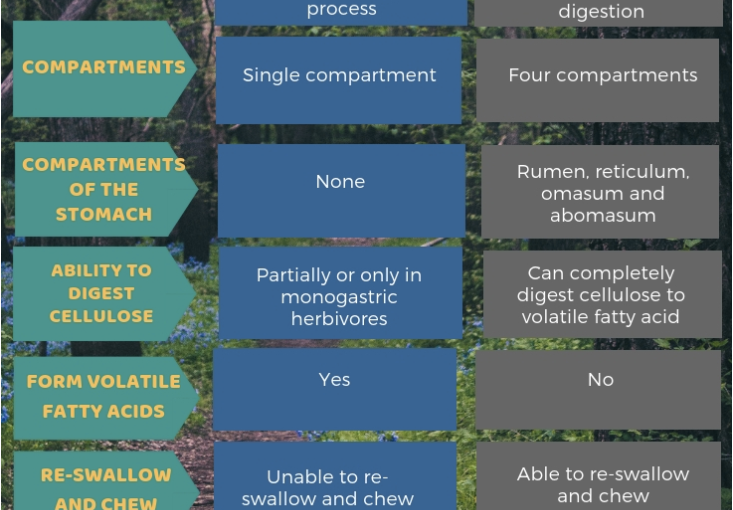We, humans, are omnivorous monogastric animals, which means we have a single-chambered stomach. This is in contrast to ruminant animals like cows, which have a four-chambered stomach to aid in the digestion of tough plant fibers.
The human digestive system is monogastric. It includes a mouth, esophagus, stomach, small intestine, large intestine, rectum, and anus. Food is first broken down mechanically in the mouth and then chemically in the stomach and small intestine with the help of digestive enzymes. The nutrients from the food are then absorbed into the bloodstream through the lining of the small intestine.
Omnivores are heterotrophs. A heterotroph is an organism that cannot produce its own food. An organism that consumes a variety of food sources, including both animal and plant matter, as their main natural diet. Omnivores are carnivorous as well as herbivorous. Their digestive systems show adaptations that break down and absorb all kinds of food types, including a range of proteins, carbohydrates, lipids, vitamins, etc.
The digestive anatomy of human omnivores shows the characteristics of both herbivores and carnivores. Mechanisms are present to digest both plant and animal matter, especially with protease enzymes to digest proteins. We have well-developed canine teeth in our oral cavities to tear off the flesh in the diet. The gut of an herbivore is longer than that of a carnivore, but omnivores have a longer gut to capacitate both types of diets.
While humans can and do consume plant-based foods, we are omnivorous by nature, meaning we consume both plant-based and animal-based foods. Our digestive system is generally well adapted to digest a variety of foods, including meat, fish, eggs, dairy products, fruits, vegetables, grains, and legumes.
One key difference between herbivores and humans is that herbivores have specialized digestive systems adapted to break down and extract nutrients from plant-based foods, which are often difficult to digest due to their high fiber content.
Most mammals and birds are omnivorous. Interestingly, there are algae and plants with omnivorous food habits. Omnivorous mammals, of course, have well-developed digestive systems. Omnivorous plants and algae do not contain alimentary tracts. Instead, there are digesting mechanisms through the secretion of enzymes in plants and algae.
What foods are best suited for omnivorous monogastric animals(humans)?
Animals with this type of digestive system are better adapted to eating foods high in concentrates. Concentrates are highly digestible, high in energy, and low in cellulose fiber. Concentrates are typically 80 to 90 percent digestible.
Monogastric animals, including humans, require a balanced diet that provides essential nutrients such as carbohydrates, proteins, fats, vitamins, and minerals. Certain animals, namely horses, rabbits, and rodents, are referred to as modified monogastric organisms because they have a larger cecum that allows for the breaking down of cellulose fiber before entering the large intestine(colon). Humans, in contrast, have a very small or underdeveloped cecum which prevents them from properly breaking down cellulose fiber.
Here are some types of foods that are generally considered safe and good for monogastric animals; specifically humans:
- Carbohydrates: Carbohydrates are a good source of energy for monogastric animals. Good sources of carbohydrates include grains like wheat, oats, legumes, and corn, as well as fruits and vegetables.
- Proteins: Proteins are essential for the growth, repair, and maintenance of the body tissues. Good sources of protein include meat, fish, eggs, dairy products, legumes, and nuts.
- Fats: Fats are an important source of energy and help in the absorption of fat-soluble vitamins. Good sources of fats include oils, nuts, seeds, and fatty fish.
- Vitamins and minerals: Vitamins and minerals are essential for many biological processes in the body. Good sources of vitamins and minerals include fruits, vegetables, whole grains, dairy products, and meats.
It’s important to note that the specific nutritional requirements for those with monogastric digestive tracts vary depending on their age, size, activity level, and other factors. It’s also important to avoid overfeeding or underfeeding, as both can lead to health problems, especially regarding highly concentrated foods like meats and dairy products.
